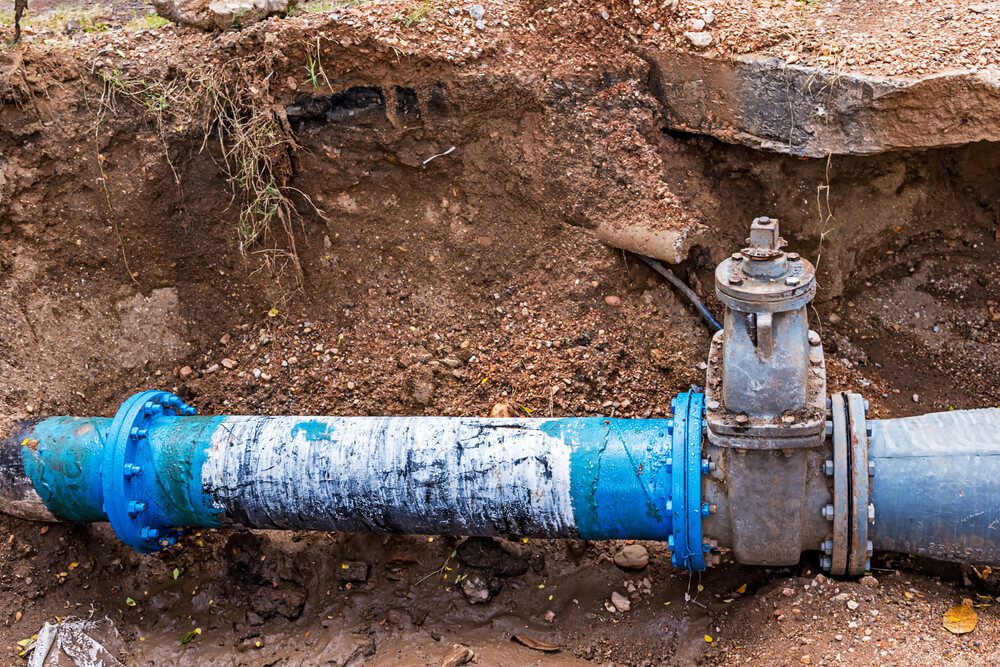Even though frozen sewer lines are not particularly common, the property owner will have inconveniences. The major problem with water freezing inside sewer pipes is that it expands, which can lead to damage or even complete failure of your plumbing system. Frozen pipes are troublesome even though they might not immediately break. Instead, as the water freezes and flows inside the pipe, pressure builds, and the weakest part of the line will eventually burst first.
Master the Art of Love: Premier Slave Dating Site
Are you tired of traditional dating apps that leave you feeling unsatisfied and unfulfilled? Are you looking for a dating experience that pushes boundaries and explores the depths of human desire? Look no further than the world of slave dating. While it may seem unconventional to some, the art of master-slave relationships has been practiced for centuries, offering a unique and intense connection between individuals.
In this article, we will delve into the fascinating world of slave dating, exploring the dynamics, rules, and benefits of this alternative form of relationship. We will examine the importance of trust, communication, and consent in creating a healthy master-slave dynamic. Whether you are an experienced practitioner or simply curious about this lifestyle, this article will provide insights and guidance to help you navigate the world of slave dating with confidence and understanding.
Unveiling the Premier Slave Dating Site: A Revolutionary Approach to Love and Relationships
Master the Art of Love: Premier slave dating site is the ultimate platform for individuals who are seeking a unique and adventurous dating experience. Our exclusive online community provides a safe and discreet environment for like-minded individuals to connect and explore their desires. Whether you are a dominant seeking a submissive partner or a submissive looking for a master, our slave dating site offers a tailored experience to fulfill your deepest fantasies.
At Master the Art of Love, we understand the importance of trust, consent, and boundaries in any relationship. Our platform ensures that all members are verified and genuine, creating a secure space for open communication and exploration. With our advanced search and matching features, you can easily find compatible partners who share your interests and desires. Whether you are new to the world of BDSM or an experienced practitioner, our slave dating site offers a supportive community where you can learn, grow, and connect with others who share your passions.
Join our exclusive slave dating site today and embark on a journey of self-discovery and pleasure. Our platform is designed to provide a seamless and user-friendly experience, allowing you to browse profiles, connect with potential matches, and engage in meaningful conversations. With a diverse and vibrant community, Master the Art of Love offers endless opportunities to explore your desires and find the connection you’ve been longing for. Unleash your inner desires and experience the thrill of BDSM dating like never before. Sign up now and start your journey towards a fulfilling and exciting love life.
Breaking Stereotypes: How the Master-Slave Dynamic Can Foster Deep Emotional Connections
Welcome to Master the Art of Love, the premier slave dating site where you can explore your desires and connect with like-minded individuals who share your passion for dominance and submission. Our platform is designed to provide a safe and discreet environment for those seeking consensual power dynamics in their relationships. Whether you are an experienced dominant or a curious submissive, our community offers a space for exploration, education, and connection.
At Master the Art of Love, we understand that every individual has unique needs and desires. That’s why our site offers a range of features to help you find your perfect match. From detailed profiles and advanced search options to private messaging and forums, you can interact with other members who understand and appreciate the complexities of power exchange. Our commitment to privacy and security ensures that your personal information remains confidential, allowing you to explore your fantasies with peace of mind. Join us today and embark on a journey of self-discovery and fulfillment in the world of slave dating.
Navigating Consent and Boundaries: Essential Guidelines for Healthy Slave-Master Relationships
Welcome to “Master the Art of Love: Premier Slave Dating Site,” where you can explore your deepest desires in a safe and discreet environment. Our platform is designed for individuals who are passionate about the art of domination and submission. Whether you’re an experienced master or a curious beginner, our site offers a unique opportunity to connect with like-minded individuals who share your interests.
At “Master the Art of Love,” we understand that trust and mutual respect are paramount in any BDSM relationship. That’s why we prioritize the privacy and security of our members. Our advanced features allow you to create a detailed profile, browse through a diverse range of profiles, and initiate conversations with potential partners. Our user-friendly interface ensures a seamless experience, making it easy for you to find the perfect match.
Join our exclusive community today and embark on a journey of exploration and self-discovery. Whether you’re seeking a long-term slave or a casual play partner, “Master the Art of Love” provides a platform where you can connect with individuals who share your passion. Unleash your desires, embrace your fantasies, and step into a world of pleasure and fulfillment. Your journey begins here.
Empowerment and Self-Discovery: Exploring the Benefits of Participating in the Slave Dating Community
Welcome to “Master the Art of Love,” the premier slave dating site that connects individuals with a shared interest in exploring the world of BDSM and power dynamics. Our platform offers a safe and discreet environment for like-minded individuals to connect, chat, and engage in consensual relationships. Whether you are an experienced Dom or a curious sub, our site provides a unique opportunity to explore your desires and meet others who share your passions.
At “Master the Art of Love,” we understand the importance of trust and respect in the BDSM community. That’s why we have implemented strict verification processes to ensure the authenticity and safety of our members. Our advanced search features allow you to filter through profiles based on your specific preferences, ensuring you can find the perfect match for your unique desires. With our private messaging system, you can easily communicate with potential partners and establish a connection before taking the next step.
Join our community of like-minded individuals who are passionate about exploring the art of love and power dynamics. Whether you are seeking a long-term D/s relationship or simply looking to indulge in your fantasies, “Master the Art of Love” offers a welcoming space for you to connect with others who share your desires. Sign up today and embark on a journey of self-discovery and exploration with people who understand and appreciate the beauty of BDSM.
Building an Inclusive and Supportive Community: Embracing Diversity and Acceptance in Slave-Master Relationships
Welcome to “Master the Art of Love,” the premier slave dating site where you can explore your deepest desires and embark on a journey of passion and submission. Our platform is dedicated to connecting like-minded individuals who share a mutual interest in the world of BDSM and power dynamics. Whether you are an experienced Dom or a curious sub, our site provides a safe and discreet environment to explore your fantasies and connect with others who understand and embrace your lifestyle.
At “Master the Art of Love,” we understand that the BDSM community is diverse, and everyone’s preferences and boundaries are unique. That’s why we offer a wide range of features and tools to help you find the perfect match. Our advanced search filters allow you to narrow down your options based on specific kinks, interests, and location, ensuring that you connect with someone who shares your desires. With our secure messaging system, you can engage in private conversations and get to know potential partners before taking the next step.
We prioritize the safety and privacy of our members above all else. Our site is built on a robust security framework, ensuring that your personal information remains confidential. We also have a team of dedicated moderators who monitor the platform 24/7 to ensure a respectful and inclusive environment for all users. We encourage open communication and consent, and we provide resources and educational materials to help you navigate the world of BDSM safely and responsibly.
Join “Master the Art of Love” today and unlock a world of pleasure and exploration. Whether you’re seeking a long-term D/s relationship or simply looking to connect with others who share your interests, our site offers a supportive community where you can embrace your true self. Discover new levels of intimacy and satisfaction as you embark on a journey of self-discovery and connection with like-minded individuals who understand and appreciate the art of love.
Love knows no boundaries, and at Premier Slave Dating Site, we believe that every individual deserves to find their perfect match. Our platform is dedicated to connecting like-minded individuals who share a passion for the art of love. Whether you are a master seeking a devoted slave or a slave searching for a nurturing master, our site offers a safe and inclusive space to explore your desires. With our extensive user base and advanced search features, you can easily find the connection you’ve been longing for. Join us today and embark on a journey of love, trust, and mutual fulfillment. Let Premier Slave Dating Site be your guide in mastering the art of love.
Signs that your sewer line is frozen
The earlier you can identify the symptoms of a frozen sewage line; the sooner you can address the problem before it requires a significant repair. Your sewage pipe may be frozen if any of the following occurs while the ambient temperature is below freezing:
- Walls and ceilings with flooding or dampness
- Puddles or sinkholes outside for no apparent reason
- Your sewer system is making gurgling noises.
- The drainage system emits unpleasant odours
- pipes with frost
- No water is flowing from the faucets.
If you observe any of the below-mentioned signs, contact Eco Pro Plumbing for the best waterloo sewer line repair. Among its many services, Eco Pro Plumbing specializes in the maintenance and renovation of residential and high-rise buildings, as well as commercial, industrial, and other types of projects. Their extensive experience in mechanical and plumbing services spans two generations, and they offer various high-quality plumbing services at an affordable price. Eco Pro Plumbing provides the best customer service and workmanship in the plumbing industry.
How to thaw a frozen sewer line?
Before attempting any do-it-yourself method, it’s crucial to be aware of the risks. Consider hiring a professional team if you don’t have much plumbing knowledge.
- Firstly, find the holding tank for your home’s septic system. Then find the septic tank cover that is most appropriate for your home.
- Because it is concrete, you’ll need to use a crowbar to open the access cover. If the ground is frozen near the cover of the holding tank, consider digging around it.
- Connect a 6-inch nozzle to a garden hose, and then connect the hose to a water source that is not your domestic water supply. It’s best to have a utility room where you can connect a hose to that hot water supply.
- Make sure to keep the hot water you use to no more than 110 degrees Fahrenheit. You might risk damaging the pipes in your home if the water is too hot.
- It would be best to locate the septic pipe that exits your home. Put the hose in line with the nozzle facing the house.
- You can find the ice blockage by turning on the water in your utility room and continuing to push the hose into the pipe until you encounter some resistance. If you spray hot water directly onto the ice, it should melt relatively quickly (you’ll feel the blockage loosen up while holding the hose).
- When the blockage clears, pull the hose out of the septic line, leaving the water running until it is entirely out of the line. Make sure you close the holding tank and leave it in the same condition as when you found it.
- You can sterilize your garden hose with Clorox wipes and clean it off with wet paper towels.
Ways to prevent frozen sewer lines
When you know what to protect, preventing your sewer line from freezing isn’t difficult. Following are some steps you can do to avoid frozen sewer lines:
- Invest in Pipe Insulation
You can invest in insulation and use it as your first defence against cold temperatures and exposed pipes. Wrap pipe insulation around the lines and secure it using electrical tape to insulate your sewer line.
- Examine your water Heater
Since it keeps the water running through the pipes hot enough to prevent freezing, you should ensure your water heater is functioning effectively.
- Run water
In freezing weather, the best thing to do is turn on your tap and let the water flow. Running water from your faucets is the best way to prevent pipes from freezing since water is far more likely to freeze when constantly flowing.
- Keep the drains clear.
It’s essential to keep your outdoor drains and septic tank warm when it’s snowing.





